DOH Medicaid Update October 2006 Vol. 21, No. 10
Office of Medicaid Management
DOH Medicaid Update
October 2006 Vol. 21, No. 10
State of New York
George E. Pataki, Governor
Department of Health
Antonia C. Novello, M.D., M.P.H., Dr. P.H.
Commissioner
Medicaid Update
is a monthly publication of the
New York State Department of Health,
Office of Medicaid Management
Brian J. Wing, Deputy Commissioner
Table of Contents
Proton Pump Inhibitor Changes
The Medicaid Pharmacy Clinical Drug Review Program Begins October 18, 2006
New York State Medicaid Preferred Drug List
New York State Medicaid Preferred Drug Quick List Effective October 18, 2006
Hospital, Clinic, Group Practice: Prescription Writing Requirements
Medicaid Program Prior Authorization Instructions and Worksheet for Prescribers
Medicaid Program Prior Authorization Instructions and Worksheet for Pharmacy
Medicaid Program Clinical Drug Review Program Prior Authorization Instructions and Worksheet for Prescribers
Message from the Medicaid Inspector General
Pharmacies: Official Prescription Program Information
Transportation Ordering Providers: Ordering Mileage for New York City Clients
Pharmacy Fee Schedule Changes
Who Pays for the Transportation of a Hospital Inpatient?
eMedNY Processing Cycle Cut-Off Time
Electronic "Remittance News" Announcements Available
Emergency Medicine Physicians: Increase in Fees Effective April 1, 2006
Announcing the Training Calendar for Free HIV/AIDS Training
Ambulette Providers: Claims Require Ordering Provider's Medicaid Identification Number
Rate-Based Providers: Dates Recorded as Paid
OMNI 3750 Point of Service Users: OMNI 3750 Terminal May Not Function With Digital Telephone Service
Safe Storage and Disposal of Household Sharps
Your Provider Manual is Going Online
Patient Education: October is Breast Cancer Awareness Month
Patient Education: Influenza - Are You at Risk?
Provider Services
Expansion of the Preferred Drug Program (PDP)
Return to Table of Contents
Effective October 18, 2006, prior authorization for non-preferred drugs in the following classes will be required:
- Leukotriene Modifiers
- Hepatitis C Agents
- Thiazolidinediones
- Prescription Proton Pump Inhibitors (PPI)
- Second Generation Prescription Antihistamines (SGA)
- Long Acting Narcotics
- Serotonin Receptor Agonists (Triptans)
- Beta Blocker Combination Products
- Anti-Emetics
- Calcitonins
- HMG-CoA Reductase Inhibitors (Statins)
- Intranasal Steroids
- Sedative Hypnotics
- Triglyceride Lowering Agents.
Prescriptions written on or after October 18, 2006 for non-preferred drugs in these classes will require prior authorization.
The complete preferred drug list is included in this edition and is available online at:
http://www.nyhealth.gov or http://newyork.fhsc.com
Reminder:
If you prescribe the preferred drug, no prior authorization in necessary!
Prescribers are required to complete the prior authorization process prior to prescribing non-preferred drugs.
To obtain prior authorization for a non-preferred drug, contact the staffed Clinical Call Center at:
(877) 309-9493 and
follow the appropriate prompts.
In an effort to make the prior authorization process more efficient for providers, the worksheets for the Preferred Drug Program and Clinical Drug Review Program prior authorization programs have been revised and are included in this edition of the Medicaid Update.
The updated prior authorization worksheets are available online at:
http://www.nyhealth.gov or
http://newyork.fhsc.com
For billing questions, call (800) 343-9000.
For clinical concerns or Preferred Drug Program questions, call (877) 309-9493.
For Medicaid pharmacy policy and operations questions, call (518) 486-3209.
Attention:
Prescribers
Proton Pump Inhibitor Changes
Return to Table of Contents
Effective October 18, 2006, the proton pump inhibitor class will be subject to the Preferred Drug Program.
Reminder:
If you prescribe the preferred drug, no prior authorization in necessary!
Nexium and Prevacid capsules have been added to the list of preferred drugs.
Prescriptions written on or after October 18, 2006 for Nexium and Prevacid capsules and Prilosec OTC will not require a prior authorization.
Prior authorization for non-preferred proton pump inhibitors will be obtained through the staffed Clinical Call Center rather than the Voice Interactive Phone System.
Questions? Please call (877) 309-9493.
The Medicaid Pharmacy Clinical Drug Review Program
Begins October 18, 2006
Return to Table of Contents
Effective October 18, 2006 the Clinical Drug Review Program (CDRP) will begin. The CDRP is aimed at ensuring specific drugs are utilized in a medically appropriate manner.
Serostim and Zyvox, which currently require prior authorization through the voice interactive phone system (VIPS), will now be processed through the staffed clinical call center. Prescriptions written on or after October 18, 2006 for Revatio, Serostim, and Zyvox will require a prior authorization that is issued by a representative at the clinical call center.
Under the CDRP, only the prescriber, not an authorized agent, can initiate the prior authorization process.
Revatio
Revatio will be prior authorized when prescribed by a board certified cardiologist or pulmonologist solely for the treatment of primary pulmonary arterial hypertension (PAH).
The diagnosis must be documented in writing and confirmed by the clinical call center prior to authorization.
Serostim
Serostim will be prior authorized for a maximum of 28 days for each prescription with no refills allowed. A new prior authorization will not be issued on a continuation of the original prescription unless 75% of the original has been used.
If a prescriber determines that continuation of Serostim beyond 12 weeks/three prior authorizations is medically necessary, validating documentation must be available for review by the Department when requested.
Zyvox
Zyvox will be prior authorized for a maximum of 14 days with no refills allowed.
If additional Zyvox is needed, the prescriber must write a new prescription and obtain a new prior authorization number.
Obtaining Prior Authorization through the CDRP
To obtain a Clinical Drug Review Program prior authorization, prescribers, not their authorized agent, must initiate the prior authorization process by calling the staffed Clinical Call Center at:
(877) 309-9493 and following the appropriate prompts.
A pharmacy technician or a pharmacist will ask for specific clinical information intended to demonstrate the patient's medical need for the CDRP drug. Fax requests for prior authorization of CDRP drugs are not permitted.
Pharmacy providers will still be required to validate prior authorizations for CDRP drugs.
Clinical guidelines for Serostim, Zyvox or Revatio and prior authorization worksheets are available at:
https://newyork.fhsc.com/providers/CDRP_forms.asp
New York State Medicaid Preferred Drug List
All non-preferred drugs in these classes will require prior authorization.
| ACE Inhibitors | ACE Inhibitors |
|---|---|
| PREFERRED AGENTS | NON-PREFERRED AGENTS - PA Required Effective 6/28/06 |
| Altace® benazepril captopril enalapril maleate lisinopril Mavik® moexipril |
Accupril® Aceon® Capoten® fosinopril sodium Lotensin® Monopril® Prinivil® quinaprill Univasc® Vasotec® Zestril® |
| ACE Inhibitors + Calcium Channel Blocker | ACE Inhibitors + Calcium Channel Blocker |
| PREFERRED AGENTS | NON-PREFERRED AGENTS - PA Required Effective 6/28/06 |
| Lotrel ® Tarka® |
Lexxel® |
| ACE Inhibitors + Diuretic | Ace Inhibitors + Diuretic |
| PREFERRED AGENTS | NON-PREFERRED AGENTS - PA Required Effective 6/28/06 |
| benazepril/HCTZ captopril/HCTZ enalapril maleate/HCTZ lisinopril/HCTZ Unieretic® |
Accuretic® Capozide® fosinopril HTC Lotensin HCT® Monopril HCT® Prinzide® quinapril/HCTZ Quinaretic® Vaseretic® Zestoretic® |
| Angiotensin Receptor Blockers | Angiotensin Receptor Blockers |
| PREFERRED AGENTS | NON-PREFERRED AGENTS - PA Required Effective 6/28/06 |
| Benicar®® Cozaar® Diovan® Micardis ® |
Atacand® Avapro® Teveten® |
| Angiotensin Receptor Blocker + Diuretic | Angiotensin Receptor Blocker + Diuretic |
| PREFERRED AGENTS | NON-PREFERRED AGENTS - PA Required Effective 6/28/06 |
| Benicar HTC® Diovan HTC® Hyzaar® Micardis HCT® | Atacand HCT® Avalide® Teveten HCT® |
| Anti-Emetics - Oral | Anti-Emetics - Oral |
| PREFERRED AGENTS | NON-PREFERRED AGENTS - PA Required Effective 10/18/06 |
| Kytril®(tablet, solution) Zofran®(tablet, solution, ODT) |
Anzemet® |
| Second Generation Antihistamines | Second Generation Antihistamines CC |
| PREFERRED AGENTS | NON-PREFERRED AGENTS - PA Required Effective 10/18/06 |
| OTC loratadine OTC loratadine-D | Allegra® Allegra-D® Clarinex® Clarinex-D® fexofenadine Semprex-D® Zyrtec®CC Zyrtec-D® |
| Beta Blockers | Beta Blockers |
| PREFERRED AGENTS | NON-PREFERRED AGENTS - PA Required Effective 6/28/06 |
| acebutolol atenolol betaxolol bisoprolol funerate labetalol metoprolol tartrate nadolol pindolol propranolol timolol maleate |
Blocadren® Coreg®CC Corgard® Inderal LA® Inderal® InnoPran XL® Kerlone® Lopressor® Levatol® Sectral® Tenormin® Toprol XL®CC Trandate® Zebeta® |
| Beta Blocker + Diuretic | Beta Blocker + Diuretic |
| PREFERRED AGENTS | NON-PREFERRED AGENTS - PA Required Effective 10/18/06 |
| atenolol/chlorthalidone bisoprolol funerate/HCTZ metoprolol tartrate/HCTZ propranolol/HCTZ |
Corzide® Inderide® Inderide LA® Lopressor HCT® Tenoretic® Timolide® Ziac® |
| Bisphosphonates - Oral | Bisphosphonates - Oral |
| PREFERRED AGENTS | NON-PREFERRED AGENTS - PA Required Effective 6/28/06 |
| Fosamax®(tablet, solution) Fosamax®Plus D |
Actonel® Actonel®with Calcium Boniva® |
| Calcitonins - Nasal | Calcitonins - Nasal |
| PREFERRED AGENTS | NON-PREFERRED AGENTS - PA Required Effective 10/18/06 |
| Miacalcin® | Fortical® |
| Calcium Channel Blockers (DHP) | Calcium Channel Blockers (DHP) |
| PREFERRED AGENTS | NON-PREFERRED AGENTS - PA Required Effective 6/28/06 |
| Afeditab CR® Dynacirc ® Dynacirc CR® felodipine ER isradipine nicardipine HCL Nifediac CC® Nifedical XL® nifedipine nifedipine ER nifedipine SA Norvasc® Sular® |
Adalat CC® Cardene® Cardene SR® Plendil® Procardia® Procardia XL® |
| Hepatitis C Agents | Hepatitis C Agents |
| PREFERRED AGENTS | NON-PREFERRED AGENTS - PA Required Effective 10/18/06 |
| PEG-Intron® PEG-Intron Redipen® Pegasys® Pegasys Convenience Pack® | None |
| HMG-CoA Reductase Inhibitors (Statins) | HMG-CoA Reductase Inhibitors (Statins) |
| PREFERRED AGENTS | NON-PREFERRED AGENTS - PA Required Effective 10/18/06 |
| Advicor® Altoprev® Crestor® Lescol® Lescol XL Lipitor® Vytorin® Zocor® |
Caduet® lovastatin Mevacor® Pravachol® prevastatin PravigardPAC® |
| Leukotriene Modifiers | Leukotriene Modifiers |
| PREFERRED AGENTS | NON-PREFERRED AGENTS - PA Required Effective 10/18/06 |
| Accolate® Singular® | None |
| Narcotics - Long Acting | Narcotics - Long Acting |
| PREFERRED AGENTS | NON-PREFERRED AGENTS - PA Required Effective 10/18/06 |
| Duragesic® fentanyl patch Kadian® morphine sulfate SR Oramorph SR® |
Avinza® MS Contin® oxycodone HCL CR Oxycontin® |
| Proton Pump Inhibitors | Proton Pump Inhibitors |
| PREFERRED AGENTS | NON-PREFERRED AGENTS - PA Required Effective 10/18/06 |
| Nexium® Prevacid®(capsule) Prilosec®OTC |
Acifex® omeprazole Prevacid NapraPAC® Prevacid® (solutab, suspension) Prilosec® Protonix® Zegerid® (capsule, packet) |
| Sedative Hypnotics/Sleep Agents | Sedative Hypnotics/Sleep Agents |
| PREFERRED AGENTS | NON-PREFERRED AGENTS - PA Required Effective 10/18/06 |
| Ambien CR® chloral hydrate estazolam flurazepam temazepam triazolam |
Ambien® Dalmane® Doral® Halcion® Lunesta® Prosom® Restoril® Rozerem® Somnote® Sonta® |
| Serotonin Receptor Agonists (Triptans) | Serotonin Receptor Agonists (Triptans) |
| PREFERRED AGENTS | NON-PREFERRED AGENTS - PA Required Effective 10/18/06 |
| Imitrex®(tablet, nasal, injection) Maxalt®(tablet, MLT) | Amerge® Axert® Frova® Relpax® Zomig®(tablet, nasal, ZMT) |
| Steroids - Intranasal | Steroids - Intranasal |
| PREFERRED AGENTS | NON-PREFERRED AGENTS - PA Required Effective 10/18/06 |
| Nasacort AQ® Nasonex® |
Beconase AQ® Flonase® flunisolide® fluticasone® Nasarel® Rhinacort Aqua® |
| Thiazolidinediones | Thiazolidinediones |
| PREFERRED AGENTS | NON-PREFERRED AGENTS - PA Required Effective 10/18/06 |
| Actos® Actoplus met® Avandia® Avandamet® Avandaryl | None |
| Triglyceride Lowering Agents | Triglyceride Lowering Agents |
| PREFERRED AGENTS | NON-PREFERRED AGENTS - PA Required Effective 10/18/06 |
| gemfibrozil Lofirba® |
Antara® fenofibrate® Lopid® Omacor® Tricor Triglide |
CC-Clinical Criteria
Please see: https://newyork.fhsc.com/downloads/providers/NYRx_PDP_clinical_criteria.pdf
New York State Medicaid Preferred Drug "Quick List" - Phase I and II
Return to Table of Contents
These drugs are preferred and do not require prior authorization.
| ACE Inhibitors |
|---|
| PREFERRED AGENTS |
| Altace® benazepril captopril enalapril maleate lisinopril Mavik® moexipril |
| ACE Inhibitors + Diuretic |
| PREFERRED AGENTS |
| benazepril/HCTZ captopril/HCTZ enalapril maleate/HCTZ lisinopril/HCTZ Unitretic® |
| Angiotensin Receptor Blockers + Diuretic |
| Benicar HCT® Diovan HCT® Hyzaar® Micardis HCT® |
| Antihistamines - Second Generation |
| PREFERRED AGENTS |
| OTC loratadine OTC loratadine-D |
| Beta Blockers + Diuretic |
| PREFERRED AGENTS |
| atenolol/chlorthalidone bisoprolol fumerate HCTZ metoprolol tartrate/HCTZ propranolol/HCTZ |
| Calcitonins - Nasal |
| PREFERRED AGENTS |
| Miacalcin® |
| Hepatitis C Agents |
| PREFERRED AGENTS |
| PEG-Intron® PEG-Intron Redipen® Pegasys® Pegasys Convenience Pack® |
| Leukotriene Modifiers |
| PREFERRED AGENTS |
| Accolate® Singular |
| Proton Pump Inhibitors |
| PREFERRED AGENTS |
| Nexium® Prevacid®(capsule) Prilosec®OTC |
| Serotonin Receptor Agonists (Triptans) |
| PREFERRED AGENTS |
| Imitrex®(tablet, nasal, injection) Maxalt®(tablet, MLT) |
| Thiazolidinediones |
| Actos® Actoplus met® Avandia® Avandamet® Avandaryl® |
| ACE Inhibitors + Calcium Channel Blocker |
|---|
| PREFERRED AGENTS |
| Lotrel® Tarka® |
| Angiotensin Receptor Blockers |
| Benicar® Cozaar® Diovan® Micardis® |
| Anti-Emetics-Oral |
| PREFERRED AGENTS |
| Kytril®(tablet, solution) Zofran®(tablet, solution, ODT) |
| Beta Blockers |
| PREFERRED AGENTS |
| acebutolol atenolol betaxolol bisoprolol funerate metoprolol tartrate nadolol pindolol propranolol |
| Bisphosphonates-Oral |
| PREFERRED AGENTS |
| Fosamax®(tablet, solution) Fosamax®Plus D |
| Calcium Channel Blockers (DHP) |
| PREFERRED AGENTS |
| Afeditab CR® Dynacirc® Dynacirc CR® felodipine ER isradipine nicardipine Nifediac CC® Nifedical XL® nifedipine Nifedipine ER nifedipine SA Norvasc® Sular® |
| HMG-CoA Reductase Inhibitors (Statins) |
| PREFERRED AGENTS |
| Advicor® Altoprev® Crestor® Lescol® Lescol XL® Lipitor® Vytorin® Zocor® |
| Narcotics-Long Acting |
| Duragesic® fentanyl patch Kadian® morphine sulfate SR Oramorph SR® |
| Sedative Hypnotics/Sleep Agents |
| PREFERRED AGENTS |
| Ambien CR® chloral hydrate estazolam flurazepam temazepam triazolam |
| Steroids-Intranasal |
| PREFERRED AGENTS |
| Nasacort AQ® Nasonex® |
| Triglyceride Lowering Agents |
| PREFERRED AGENTS |
| gemfibrozil Lofibra® |
Complete List: https://newyork.fhsc.com/downloads/providers/nyrx_pdp_pdl.pdf
Attention
Prescribers
Prescription Writing Requirements
Return to Table of Contents
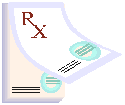
The New York State Office of The Medicaid Inspector General has received reports from pharmacy providers that some prescriptions written on hospital, clinic and group practice prescription forms do not contain the name and license number of the prescriber.
As previously noted in the Medicaid Update, to be valid, prescriptions must identify the actual prescriber.
Prescribers must provide their State license number or Medicaid provider identification number on all prescriptions written for Medicaid recipients. This will ensure proper processing of your patient's prescription. When a prescription is written by an unlicensed intern or resident, the supervising physician's Medicaid provider identification number or State license number must be provided.
Sanctions may be imposed on those who fail to adhere to these rules.
Please refer to the September 2005 and March 2004 Medicaid Updates for further information.
Questions? Please call the Office of the Medicaid Inspector General, Information Technology & Fraud Detection Systems at: (518) 474-2239
NEW YORK STATE MEDICAID PROGRAM
PRIOR AUTHORIZATION INSTRUCTIONS FOR PRESCRIBERS
PREFERRED DRUG PROGRAM
Return to Table of Contents
Prior Authorization Call Line 1-877-309-9493
Prior Authorization Fax Line 1-800-268-2990
PROGRAM INFORMATION
- Drugs identified as "Preferred" do not require prior authorization. If you prescribe the preferred drug, no additional action is necessary. Preferred drugs will be added to the preferred drug list (PDL) on an ongoing basis.
- Drugs identified as non-preferred require prior authorization.
- A list of preferred and non-preferred drugs is available at http://www.nyhealth.gov and http://newyork.fhsc.com.
- The prescriber, or an agent of the prescriber, must call the prior authorization call line to initiate a prior authorization for a non-preferred drug.
- Fax requests are permitted. A completed copy of the preferred drug program prior authorization fax request form, found on the reverse side of this page, should be sent to 1-800-268-2990. Fax requests may take up to 24 hours to process.
- If calling for prior authorization of a non-preferred drug, the prescriber is not required to maintain any forms; however, the prescriber, or their agent, should be prepared to answer the questions below and document the drug name, the reason the non-preferred drug is being requested, and the prior authorization number in the patient's medical record.
- Prior authorization is required for each new prescription and is effective for the life of the prescription (up to five refills in six months).
PRESCRIBER PROCEDURE
- To initiate the prior authorization process, the prescriber must call the prior authorization phone line at 1-877-309-9493 and select Option "1" for Prescriber.
- Select Option "1" again to obtain a prior authorization for a non-preferred drug. Please be prepared to provide the following information when calling:
- Prescriber's Medicaid ID number or license number
- Recipient's Medicaid ID number
- Non-preferred drug name
- The questions you will be asked will include the following:
- Has the patient experienced a treatment failure with the preferred drug?
- Has the patient experienced an adverse drug reaction with a preferred drug?
- Is there a documented history of successful therapeutic control with a non-preferred drug and transition to a preferred drug is medically contraindicated?
- Non-preferred drugs on the PDL that are followed by a "CC", (clinical criteria), will require an additional response pertinent to that drug.
- If uncertain which selection to make or if assistance with the prior authorization process is required, select Option "3" for support.
- Once authorization is given and a prior authorization number is obtained, the number must be written on the face of the prescription. Please be sure to include the "W" when writing the prior authorization number on the patient's prescription.
For billing questions, call 1-800-343-9000
For clinical concerns or Preferred Drug Program questions, visit
www.nyhealth.gov and http://newyork.fhsc.com
or call 1-877-309-9493
For Medicaid pharmacy policy and operations questions, call (518) 486-3209.
NEW YORK STATE MEDICAID PROGRAM
PRIOR AUTHORIZATION WORKSHEET/FAX FORM FOR PRESCRIBERS
PREFERRED DRUG PROGRAM
Return to Table of Contents
Prior Authorization Call Line 1-877-309-9493
Prior Authorization Fax Line 1-800-268-2990
Non-preferred drugs must be prior authorized. To request prior authorization via fax, please complete this form. A faxed request takes up to 24 hours and can only be used when requesting prior authorization for a non-preferred drug. Specific clinical criteria are associated with certain drug classes and immediately follow this form.
| RECIPIENT INFORMATION | |
|---|---|
| Recipient Name: | Street: |
| Recipient Medicaid ID # (2 letters, 5 numbers, 1 letter): | City: State: Zip: |
| PRESCRIBER INFORMATION | |
| Prescriber Name Prescriber ID Number (MMIS) OR license NYS Physician /PA/Resident: 0 0 __ __ __ __ __ __ NYS Optometrist: U __ __ __ __ __ __ or V __ __ __ __ __ __ NYS Nurse Practitioner/Midwife: F __ __ __ __ __ NYS Dentist: 0 0 0 __ __ __ __ __ NYS Podiatrist: 0 0 0 0 __ __ __ __ OR Out-of-State License: __ __ __ __ __ __ __ __ (Use your state abbreviation in the first two spaces.) |
Contact Person: Street: City: State: Zip: Office Phone #: Office Fax #: |
| DIAGNOSIS AND MEDICAL INFORMATION | ||
|---|---|---|
| Drug Name: | Strength and Route of Administration: | Frequency: |
| [ ] New Prescription OR Date Therapy Initiated: | Expected Length of Therapy: | Qty: |
| Height/Weight: | Drug Allergies: | Diagnosis: |
| Prescriber's Signature: | Date: | |
| RATIONALE FOR REQUEST OF PRIOR AUTHORIZATION FORM CANNOT BE PROCESSED WITHOUT REQUIRED EXPLANATION |
|---|
| [ ] Patient has experienced a treatment failure with a preferred drug. |
| [ ] Patient has experienced an adverse drug reaction with a preferred drug. |
| [ ] There is documented history of successful therapeutic control with a non-preferred drug and transition to a preferred drug is medically contraindicated. |
| [ ] Other (please specify - if necessary, fax additional pages): |
For billing questions, call 1-800-343-9000.
For clinical concerns or Preferred Drug Program questions, visit
http://www.nyhealth.gov and http://newyork.fhsc.com
or call 1-877-309-9493.
For Medicaid pharmacy policy and operations questions, call (518) 486-3209.
NEW YORK STATE MEDICAID PROGRAM
PRIOR AUTHORIZATION WORKSHEET/FAX FORM FOR PRESCRIBERS
PREFERRED DRUG PROGRAM
Return to Table of Contents
Prior Authorization Call Line 1-877-309-9493
Prior Authorization Fax Line 1-800-268-2990
Clinical Criteria
Beta Blockers:
[ ] Patient is being treated for heart failure.
____________________________________________________________________________________________________________
[ ] Patient's heart failure symptoms were previously controlled with another medication.
Second Generation Antihistamines:
[ ] Patient is under twenty-four (24) months of age.
For billing questions, call 1-800-343-9000.
For clinical concerns or Preferred Drug Program questions, visit
http://www.nyhealth.gov and http://newyork.fhsc.com
or call 1-877-309-9493.
For Medicaid pharmacy policy and operations questions, call (518) 486-3209.
NEW YORK STATE MEDICAID PROGRAM
PRIOR AUTHORIZATION INSTRUCTIONS FOR PHARMACY
Return to Table of Contents
Prior Authorization Call Line 1-877-309-9493
PROGRAM INFORMATION
Preferred Drug Program
- Drugs identified as "Preferred" do not require prior authorization. Preferred drugs will be added to the preferred drug list (PDL) on an ongoing basis.
- Drugs identified as non-preferred require prior authorization.
- A list of preferred and non-preferred drugs is available at http://www.nyhealth.gov and at http://newyork.fhsc.com.
Clinical Drug Review Program
- Drugs included in the CDRP require prior authorization.
- A list of CDRP drugs is available at http://www.nyhealth.gov and at http://newyork.fhsc.com.
Mandatory Generic Program
- Brand-name drugs with an A-rated therapeutically equivalent product (as determined by the FDA) must be prior authorized. A prior authorization is not required from the Mandatory Generic program when there is no A-rated generic.
PHARMACY PROCEDURE
To initiate the prior authorization process, the pharmacist must call the prior authorization phone line at 1-877-309-9493
Select Option "2"
for Pharmacist
Preferred Drug Program
Select Option "1" to validate a prior authorization for a non-preferred drug. The prior authorization number ends with the letter "W".
Clinical Drug Review Program
Select Option "1" to validate a prior authorization for a CDRP drug. The prior authorization number ends with the letter "W".
Mandatory Generic Program
Select Option "2" to validate a prior authorization for a brand-name drug. The prior authorization number does not end with the letter "W".
Please be prepared to provide the following information by completing the pharmacy worksheet:
- Prior authorization number
- Recipient's Medicaid ID number - 2 letters, 5 numbers, 1 letter
- Pharmacy 8-digit Medicaid MMIS number
- Pharmacy category of service (for Mandatory Generic program only)
- 10-digit telephone number starting with area code
- 11-digit NDC of the drug you are dispensing
- Quantity of the fill as a whole number
- Number of refills ordered
- You will hear a message that you have authorization to dispense the drug.
- Pharmacists may enter multiple prior authorizations during one telephone call.
- Use the same prior authorization number on claims for refills - you do not need to call the prior authorization line again for refills of this prescription.
SUBMITTING A CLAIM
- After the prior authorization is complete, there will be a slight delay while the information is transmitted to our fiscal agent. Until that transfer occurs, the prescription cannot be adjudicated on-line. We recommend you wait approximately two minutes before you begin your claim submission.
- When billing a prescription, the prior authorization number must be entered into the prior authorization code field. Do NOT enter the "W" in the prior authorization field when submitting a claim.
- No more than two claims with prior authorization numbers can be submitted for payment in one transaction. Refer to the ProDUR/ECC Provider Manual for complete instructions.
For billing questions, call 1-800-343-9000.
For clinical concerns or questions, visit www.nyhealth.gov and
http://newyork.fhsc.com
or call 1-877-309-9493.
For Medicaid pharmacy policy and operations questions, call (518) 486-3209.
NEW YORK STATE MEDICAID PROGRAM
PRIOR AUTHORIZATION VALIDATION WORKSHEET FOR PHARMACY
Return to Table of Contents
Prior Authorization Call Line 1-877-309-9493
| PRIOR AUTHORIZATION NUMBER |
|---|
Prior Authorization Number (11- digit): __ __ __ __ __ __ __ __ __ __ __ |
| RECIPIENT INFORMATION |
Recipient Medicaid Identification Number: __ __ __ __ __ __ __ __ (2 letters, 5 numbers, 1 letter) |
| PHARMACY INFORMATION |
Pharmacy MMIS Number: __ __ __ __ __ __ __ __ |
Pharmacy Category of Service: __ __ __ __ (0161, 0441, 0288) |
Pharmacy Telephone Number with Area Code: (__ __ __ ) __ __ __--__ __ __ __ |
NDC (11-digit): __ __ __ __ __ __ __ __ __ __ __ |
Quantity (per fill): __ __ __ __ |
Number of Refills: _____ |
For billing questions, call 1-800-343-9000.
For clinical concerns or questions, visit www.nyhealth.gov and
http://newyork.fhsc.com
or call 1-877-309-9493.
For Medicaid pharmacy policy and operations questions, call (518) 486-3209.
NEW YORK STATE MEDICAID PROGRAM
PRIOR AUTHORIZATION INSTRUCTIONS FOR PRESCRIBERS
CLINICAL DRUG REVIEW PROGRAM
Return to Table of Contents
Prior Authorization Call Line 1-877-309-9493
PROGRAM INFORMATION
- Drugs included in the Clinical Drug Review Program require prior authorization.
- A list of CDRP drugs is available at http://www.nyhealth.gov and at http://newyork.fhsc.com.
- Under the CDRP, only the prescriber, not an authorized agent, must call the prior authorization call line to initiate a prior authorization.
- Fax requests are NOT permitted for the Clinical Drug Review Program.
- When calling the staffed clinical call center, a pharmacy technician or a pharmacist will ask for specific clinical information.
PRESCRIBER PROCEDURE
- To initiate the prior authorization process, the prescriber must call the prior authorization phone line at 1-877-309-9493 and select Option "1" or Prescriber.
- Select Option "1" again to obtain a prior authorization for a CDRP drug. Please be prepared to provide the following information when calling:
- Prescriber's Medicaid ID number or license number
- Recipient's Medicaid ID number
- CDRP drug name
- Each CDRP drug has specific clinical information that must be provided before a prior authorization will be issued. The clinical criteria relevant to each specific CDRP drug are listed at the end of the prior authorization worksheet.
- If uncertain which selection to make or if assistance with the prior authorization process is required, select Option "3" for assistance.
- Once authorization is given and a prior authorization number is obtained, the number must be written on the face of the prescription. Please be sure to include the "W" when writing the prior authorization number on the patient's prescription.
For billing questions, call 1-800-343-9000.
For clinical concerns or Clinical Drug Review Program questions, visit www.nyhealth.gov and
http://newyork.fhsc.com or call 1-877-309-9493.
For Medicaid pharmacy policy and operations questions, call (518) 486-3209.
NEW YORK STATE MEDICAID PROGRAM
PRIOR AUTHORIZATION WORKSHEET FOR PRESCRIBERS
CLINICAL DRUG REVIEW PROGRAM
Return to Table of Contents
Prior Authorization Call Line 1-877-309-9493
| RECIPIENT INFORMATION | |
|---|---|
| Recipient Name: | Street: |
| Recipient Medicaid ID # (2 letters, 5 numbers, 1 letter): | City: State: Zip: |
| PRESCRIBER INFORMATION | |
| Prescriber Name_____________________________________________ Prescriber ID Number (MMIS)____________________________________________ OR license NYS Physician /PA/Resident: 0 0 __ __ __ __ __ __ NYS Optometrist: U __ __ __ __ __ __ or V __ __ __ __ __ __ NYS Nurse Practitioner/Midwife: F __ __ __ __ __ NYS Dentist: 0 0 0 __ __ __ __ __ NYS Podiatrist: 0 0 0 0 __ __ __ __ OR Out-of-State License: __ __ __ __ __ __ __ __ (Use your state abbreviation in the first two spaces.) |
Contact Person:__________________________________________________________________ Street:________________________________________________ City:____________________________________________State:_____________________________________ Zip:__________________________ Office Phone #:_________________________Office Fax #:____________________________ |
| DIAGNOSIS AND MEDICAL INFORMATION | ||
|---|---|---|
| Drug Name: | Strength and Route of Administration: | Frequency: |
| [ ] New Prescription OR Date Therapy Initiated: | Expected Length of Therapy: | Qty: |
| Height/Weight: | Drug Allergies: | Diagnosis: |
| Prescriber's Signature: | Date: | |
| CLINICAL CRITERIA SPECIFIC TO A CDRP DRUG MUST BE COMPLETED FOR PRIOR AUTHORIZATION |
|---|
Clinical criteria relevant to each specific CDRP drug is available on the proceeding pages, and must be completed before prior authorization will be given. |
| PRIOR AUTHORIZATION NUMBER |
Prior Authorization Number (11 digits): __ __ __ __ __ __ __ __ __ __ __ |
The following mandatory Clinical Criteria must be completed before a prior authorization will be issued.
DO NOT FAX THE FORM
For billing questions, call 1-800-343-9000.
For clinical concerns or Clinical Drug Review Program questions, visit www.nyhealth.gov and
http://newyork.fhsc.com
or call 1-877-309-9493.
For Medicaid pharmacy policy and operations questions, call (518) 486-3209.
NEW YORK STATE MEDICAID PROGRAM
PRIOR AUTHORIZATION WORKSHEET FOR PRESCRIBERS
CLINICAL DRUG REVIEW PROGRAM
Return to Table of Contents
Prior Authorization Call Line 1-877-309-9493
CLINICAL CRITERIA
ZYVOX:
Are you or have you consulted with an infectious disease specialist for this patient?_______________________
Was a culture done?________________________
Was sensitivity to ZYVOX (linezolid) determined?______________________
Was ZYVOX (linezolid) started in the hospital?______________________
Were other drugs tried and failed?__________________
DIAGNOSIS (Choose one):
[ ] Vancomycin resistant infections including concurrent bacteremia
[ ] Nosocomial pneumonia
[ ] Community acquired pneumonia
[ ] Skin structure infections complicated and uncomplicated
For billing questions, call 1-800-343-9000.
For clinical concerns or Clinical Drug Review Program questions, visit www.nyhealth.gov and
http://newyork.fhsc.com or call 1-877-309-9493.
For Medicaid pharmacy policy and operations questions, call (518) 486-3209.
NEW YORK STATE MEDICAID PROGRAM
PRIOR AUTHORIZATION INSTRUCTIONS FOR PRESCRIBERS
CLINICAL DRUG REVIEW PROGRAM
Return to Table of Contents
Prior Authorization Call Line 1-877-309-9493
CLINICAL CRITERIA
SEROSTIM:
Dose (based on weight, see chart below)________________________mg SC daily
Day supply (maximum 28 days)_________________
Does patient have clearly documented HIV infection or AIDS?__________________________
Is patient 18 years of age or older?___________________________
Is patient receiving at least 100% of estimated caloric requirement on current nutritional regimen?_____________________________
Are you or have you consulted with an HIV specialist?______________________________________
Does patient have unintentional weight loss of at least 5% or greater from baseline pre-morbid weight or weigh an amount that indicates a
recent significant weight loss has occurred (BMI‹20kg/m2) in the absence of opportunistic infection?_____________________
Is patient on current anti-viral therapy with good viral suppression?_______________________________
Does the patient have recent blood work to confirm an amylase level ≤ 3 times the upper normal limit, a creatinine level ≤ 2mg/dl or a fasting triglyceride level ≤ 500mg/dl?_______________________
Does the patient have an active malignancy (other than Kaposi's Sarcoma) or are they undergoing systemic chemotherapy or being treated with interferon, anabolic steroids or investigational drugs? ____________________________
Does the patient have evidence of GI bleeding, intestinal obstruction, malabsorption syndrome, or severe liver dysfunction?_______________________________
Does the patient have angina pectoris, coronary artery disease, congestive heart failure, renal failure, or serious chronic anemia?______________________________
Does the patient have a history of glucose intolerance or uncontrolled hypertension?_________________________________
Have other treatment modalities been tried and failed?_______________________________
Patient's current weight in pounds_______________________lbs
Patient's height in inches___________________inches
Patient's current Body Mass Index (BMI)_______________________________
SEROSTIM DOSING CHART:
| WEIGHT RANGE | APPROPRIATE DOSE |
|---|---|
| > Over 121 pounds (>55 kilograms) | 6 mg SC daily |
| 99 to 121 pounds ( 45-55 kilograms) | 5 mg SC daily |
| 77 to 98 pounds (35-44 kilograms) | 4 mg SC daily |
For billing questions, call 1-800-343-9000.
For clinical concerns or Clinical Drug Review Program questions, visit www.nyhealth.gov and
http://newyork.fhsc.com
or call 1-877-309-9493.
For Medicaid pharmacy policy and operations questions, call (518) 486-3209.
NEW YORK STATE MEDICAID PROGRAM
PRIOR AUTHORIZATION WORKSHEET FOR PRESCRIBERS
CLINICAL DRUG REVIEW PROGRAM
Return to Table of Contents
Prior Authorization Call Line 1- 877- 309-9493
CLINICAL CRITERIA
REVATIO:
Are you the practitioner on record primarily responsible for the management of the condition requiring the use of Revatio for this patient?___________
Are you currently board certified in Pulmonary or Cardiovascular disease or is there documentation in the patient's medical record of an evaluation by a physician, board certified in Pulmonary or Cardiovascular disease?______________________
What is the diagnosis documented in the patient's chart that requires treatment with Revatio?________________
Mean Pulmonary Artery Pressure (either at rest or with exercise):__________________
Pulmonary artery occulusion pressure:_____________
Acute pulmonary vasoreactivity (as determined during right catheterization):________
*Alternative-fax RHC report to 1-800-268-2990
What NYHA/WHO classification describes the patient's current functional status?__________________
Before prescribing this drug, have you inquired about regular or intermittent therapy with nitrates or drugs containing nitrates within the past 180 days, and completed counseling of this patient including strong warning against the use of any drugs containing nitrates in conjunction with Revatio?_________________
Is this patient currently using an oral erectile dysfunction medication?___________________
Have you evaluated for retinitis pigmentosa and completed counseling on the risk of ocular disturbances, non-arteric anterior ischemia optic neuropathy (NAION) and potential for blindness?
_________________________
For billing questions, call 1-800-343-9000.
For clinical concerns or Clinical Drug Review Program questions, visit www.nyhealth.gov
and
http://newyork.fhsc.com or call 1-877-309-9493.
For Medicaid pharmacy policy and operations questions, call (518) 486-3209.
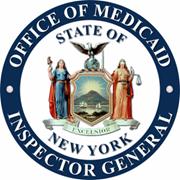
Message From Kimberly O'Connor
Medicaid Inspector General
Return to Table of Contents
New York State's Medicaid Program is big and it's expensive. In the summer of 2005, Governor Pataki appointed an outside expert, and created the New York State Medicaid Inspector General, to conduct a comprehensive review of New York State's Medicaid system and recommend fundamental, long-term structural changes and reforms to control fraud, waste and abuse.
Accordingly, we not only conducted an extensive review of New York's Medicaid system, we also examined the systems of other states. We had input from:
- the Nelson A. Rockefeller Institute of Government;
- private sector insurers and consultants;
- provider groups;
- medical professionals; and
- information technology analysts.
As a result of this review, Governor Pataki sought to establish an independent fraud-fighting entity within the Department of Health that would build on New York State's accomplishments in preventing and detecting Medicaid fraud, waste and abuse by:
- separating the Program integrity function from the administration of the Program;
- prioritizing and focusing fraud, waste and abuse control activities;
- creating a single point of leadership and responsibility for such activities;
- building and maintaining an integrated system of communication among all involved agencies with fraud, waste and abuse control responsibilities; and
- maximizing the use of all available State resources for such activities.
New York's anti-fraud programs were concentrated principally in the Department of Health - which also oversees the Medicaid Program itself.
That co-location of functions creates an obvious and inevitable conflict, as the pressure to pay providers constantly battles with efforts to ensure that monies are not misspent.
Such a conflict is hardly unique to New York. Increasingly, other states are also separating the funding of Medicaid services and recipient eligibility determinations from the policing of service providers. Such a separation will guarantee that the mission of the Office of the Medicaid Inspector General (OMIG) is free from conflict and will protect its energies and resources.
We have separated the two functions while still preserving the single state agency structure required by federal law. Accordingly, although the OMIG is part of the New York State Department of Health, the Inspector General reports not to the Commissioner of Health but rather directly to the Governor's Office.
As a result of our review and recommendations, Governor Pataki expanded the functions of the Office of the Medicaid Inspector General by issuing a superseding Executive Order No. 140.1 on February 2, 2006. This resulted in the Medicaid audit, investigative, fraud detection systems and recovery component of the third party liability staff coming to the OMIG - accomplishing this critical separation of function that will keep our mission to prevent and detect fraud, waste and abuse focused.
On July 26, 2006 Governor Pataki signed legislation establishing the OMIG in statute:
The legislation, passed with bi-partisan support, amends:
- the Public Health Law, in relation to establishing the Office of the Medicaid Inspector General, and provides for its powers and duties;
- the Social Services Law, in relation to the development and testing of new methods of Medicaid claims and utilization review to improve Medicaid fraud control and expenditure accountability and to mandate provider compliance programs;
- the Social Services Law, in relation to advisory opinions; and
- the Penal Law, the Criminal Procedure Law and the Labor Law, in relation to new crimes of health care fraud; and
- the Executive Law, in relation to designating such office as a qualified agency for the purposes of criminal history information.
The statute provides that the head of the Office of the Medicaid Inspector General is the Medicaid Inspector General of the State of New York who shall be appointed by the Governor and confirmed by the Senate and who shall report directly to the Governor's Office.
The functions of the OMIG include:
- conducting and supervising activities to prevent, detect and investigate Medicaid fraud, waste and abuse and, to the greatest extent possible, coordinating such activities amongst:
- the Offices of Mental Health, Mental Retardation and Developmental Disabilities, Alcoholism and Substance Abuse Services, Temporary Disability Assistance, and Children and Family Services;
- the Department of Education;
- the fiscal agent, Computer Sciences Corporation (CSC), employed to operate the Medicaid Management Information System;
- the State Attorney General for Medicaid Fraud Control; and,
- the State Comptroller;
- pursuing civil and administrative enforcement actions against those who engage in fraud, waste or abuse or other illegal or inappropriate acts perpetrated against the Medicaid Program;
- keeping the Governor and the heads of agencies with responsibility for the administration of the Medicaid Program apprised of efforts to prevent, detect, investigate, and prosecute fraud, waste and abuse within the Medicaid system;
- making information and evidence relating to potential criminal acts which we may obtain in carrying out our duties available to appropriate law enforcement and consulting with:
- the New York State Deputy Attorney General for Medicaid Fraud Control;
- federal prosecutors; and
- local district attorneys to coordinate criminal investigations and prosecutions;
- receiving and investigating complaints of alleged failures of state and local officials to prevent, detect and prosecute fraud, waste and abuse; and
- performing any other functions that are necessary or appropriate to fulfill the duties and responsibilities of the office.
The OMIG also has broad subpoena powers:
- ad testificandum (a subpoena ad testificandum is a command to a named individual or corporation to appear at a specified time and place to give oral testimony under oath); and
- duces tecum (i.e., a writ or process of the same kind as the subpoena ad testificandum, including a clause requiring the witness to bring with him and produce to the court, books, papers, etc.).
The statute also requires the cooperation of all relevant state and local agency officials and employees.
For state fiscal year 2005-2006 (April 2005 - March 2006), fraud, waste and abuse initiatives included:
- 298 Medicaid provider exclusions and terminations;
- 166 exclusions of non-Medicaid enrolled providers;
- 774 overall referrals to various agencies - including 71 referrals to the Attorney General's Medicaid Fraud Control Unit, and 278 to local districts;
- 1,026 undercover shops/onsite inspections;
- 347 Credential Verification Reviews (CVRs);
- $107.7 million in audit recoveries; and
- $566 million in third party recoveries.
Based upon the reform initiatives that have already been put into place, this year's budget more than doubled our audit target for state fiscal year 2006-2007 from the previous year.
The 2006-07 (April 2006 - March 2007) Budget funds 411 existing positions related to fraud, waste and abuse control activities and provides additional resources to establish 81 new positions.
In total, the Office of Medicaid Inspector General will have a State workforce of 492 full-time employees, and another
135 employees funded by contractual resources- such as additional auditors and investigators.
The Medicaid Inspector General is headquartered in Albany with regional field offices in New York City, White Plains, Hauppauge, Syracuse, Rochester, and Buffalo.
In addition to hiring more state employees, New York is currently increasing the number of medical professionals assisting auditors and investigators in determining if Medicaid billings are proper.
Sophisticated data mining is merely a necessary, first step in curtailing fraud, waste, and abuse. An auditor often cannot determine whether a doctor is improperly billing unless he or she can review the case with an experienced medical practitioner in the same field.
To accomplish this, we are actively developing a peer review program with New York State's extensive State University system - primarily, but not exclusively, at the State University of New York at Stony Brook, in addition to adding professional medical staff to our workforce, where possible.
The State will also devote resources to a Federal-State task force, based in and focused on New York City, and dedicated to investigating criminal groups engaged in extensive health fraud. Medicaid fraud knows no geographic limits, but few doubt that fraud is concentrated in New York City, often perpetrated by organized groups.
We have conferred at length with the FBI and other senior federal law enforcement authorities in New York City, and they are eager to join forces with New York State to create a task force focusing on health care fraud. Adding to their resources and targeting large-scale schemes can only strengthen anti-fraud efforts.
We are also diligently working to implement the Medi-Medi Program, a computer match of Medicare and Medicaid payments, in the next few months. Providers who defraud the Medicare Program are prone to defraud the Medicaid Program, and vice-versa.
Through Medi-Medi, New York will be able to examine Medicaid and Medicare claims simultaneously and identify inappropriate billing patterns
not clearly evident when claims from either Program's billings are independently viewed.
While most Medicaid providers (and recipients) are entirely honest, the program has grown so large that even a small percentage of fraud, waste and abuse represents a large diversion of taxpayers' money. New York can - and will - do better!
Recent initiatives include, but are not limited to, the following:
- Centralizing and increasing review of OASAS, OMH, and OMRDD providers to improve our oversight of the provision of "soft" behavioral health services;
- Utilization of resources where technology and more effective communication and coordination can achieve results;
- Improve data flow through technology, examples include: Workers' Compensation Data, death data, and birth data; and
- Increasing usage of strategies that have been successful, including Post and Clear, Restricted Recipient Program, cardswipe, and Edit 1141 (Edit 1141 is a prepayment review of claims associated with selected/designated providers--requests for documentation to support the provider's billings or orders may ensue.)
The combination of increased fraud-fighting authority and resources authorized by the Governor and the Legislature sends a powerful message to those engaged in Medicaid fraud: the game has changed in New York State. Providers and recipients attempting to defraud the system do so at their own risk - and that risk has just dramatically increased.
Attention
All Providers
Official Prescription Program
Return to Table of Contents
You were notified in the May 2006 Medicaid Update, that:
The new Public Health Law designed to combat prescription fraud went into full effect on April 19, 2006, when all prescriptions written in New York State--for both controlled and non-controlled substances--must be written on an official New York State prescription.
- New York State hospitals, and their affiliated clinics, are exempt from the requirement for their staff practitioners to prescribe on official prescriptions until April 19, 2007. The exemption applies only to the prescribing of non-controlled substances.
- Official prescriptions generated by practitioners using printers in an electronic medical record system (EMR) will contain a variety of different formats and fonts. All are valid for dispensing if they contain all information required by New York law.
- As of April 19, 2006, pharmacists may fill non-official prescriptions from New York State practitioners for non-controlled substances until October 19, 2006.
- Pharmacists may continue to fill non-official prescriptions issued by out-of-state practitioners if the prescriptions contain all information required by New York State law.
- Pharmacies may dispense (until May 19, 2007) all prescriptions for non-controlled substances issued on prescriptions issued in the name of the following comprehensive voluntary non-profit diagnostic and treatment centers:
- Brownsville Multi-Service Family Health Center
- Callen Lorde Community Health Center
- Charles B. Wang Community Health Center
- Community Health Center of Buffalo
- Cumberland Diagnostic & Treatment Center
- Dr. Martin Luther King, Jr. Health Center
- East New York Diagnostic & Treatment Center
- Gouverneur Healthcare Services
- Hudson River Community Health Care
- Institute for Urban Family Health
- Joseph P. Addabo Community Health Center
- Morris Heights Health Center
- Morrisania Diagnostic & Treatment Center
- Renaissance Health Care Network Diagnostic & Treatment Center
- Segundo Ruiz Belvis Diagnostic & Treatment Center
- Urban Health Plan.
Please take note: On October 19, 2006, an edit will be implemented at Computer Sciences Corporation that will deny all claims for prescriptions written by solo practitioners and non-affiliated clinics (other than those listed above) that are not written on Official Prescription forms.
As a requirement of submitting a valid claim and receiving payment, all claims for such prescriptions must contain the prescription serial number preprinted on the Official Prescription form.
As indicated above, some valid prescriptions can be dispensed when not written on Official Prescription forms. These include:
- Prescriptions on hospital or clinic prescription pads that are not on Official Prescription forms. If you claim for medications prescribed on such forms, use HHHHHHHH in lieu of the prescription serial number.
- Prescriptions written by Out-of-State prescribers can be identified by use of ZZZZZZZZ in lieu of a serial number.
- Prescriptions submitted via fax or electronically should be identified via EEEEEEEE in lieu of a serial number.
- Oral prescriptions should be identified via use of 99999999.
- For patient-specific orders to a vendor pharmacy for carve-out drugs for nursing home patients and children in foster care, use NNNNNNNN in lieu of serial numbers.
Questions? Please call the Office of the Medicaid Inspector General, Information Technology & Fraud Detection Systems at: (518) 474-2239
Missing Issues of the...
Medicaid Update?
The Medicaid Update, indexed by subject area, can be accessed online at the New York State Department of Health website:
http://www.nyhealth.gov/nysdoh/mancare/omm/main.htm
Hard copies can be obtained upon request by emailing:
Attention
Transportation Ordering Providers
Ordering Mileage for New York City Clients
Return to Table of Contents
This article clarifies the Department's policy on mileage within the City of New York.
When to Order Mileage
Mileage within urban areas, such as New York City, is difficult to control. Therefore, New York City has established fixed reimbursement amounts for trips occurring within the five boroughs encompassing the City for all modes of transportation.
Reminder:
To order transportation prior authorization for a New York City Medicaid client, call Computer Sciences Corporation at:
(800) 343-900.
When a trip occurs within any of the five boroughs, i.e., Queens to Manhattan, mileage should not be ordered.
When a New York City recipient requires long-distance transportation, i.e., Manhattan to Suffolk County, mileage may be ordered, beginning at the City limits.
More Information
For more information about the transportation of New York City Medicaid clients, please review the following editions of the Medicaid Update:
Questions? Please contact the Medicaid Transportation Unit at (518) 474-9219, or email MedTrans@health.state.ny.us.
Pharmacy Fee Schedule Changes
Return to Table of Contents

Please make the following changes to your Pharmacy Fee Schedule (Rev. 4/1/06):
Parenteral Formula
Effective for dates of service on and after September 1, 2006
B4185 Parenteral nutrition solution, per 10 grams lipids the price is $8.50 (p. 14).
If claims are processed at the old fee, you can bill for an adjustment for dates of service on or after September 1, 2006.
Diaphragms
Effective for dates of service on and after October 1, 2006
A4266 Diaphragm for contraceptive use the price will be increased to $37.08 (p. 22).
Payment includes dispensing of the diaphragm kit and is appropriate for any type of diaphragm (e.g., coil, flex and spring).
Questions? Please call the Division of Medical Review and Provider Enrollment at (518) 474-8161.
Who Pays for the Transportation of a Hospital Inpatient?
Return to Table of Contents
When a Medicaid recipient is admitted to a hospital (under Article 28 of the Public Health Law), the hospital is reimbursed their inpatient rate, Diagnostic Related Group (DRG) and per diem, which includes all transportation services for the patient.
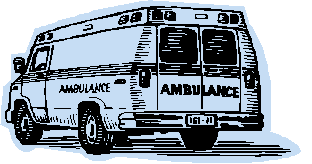
If the admitting hospital sends a Medicaid inpatient (round trip) to another hospital for purposes of obtaining a diagnostic or therapeutic service, the original admitting hospital is responsible for the provision of the transportation services.
The admitting hospital is responsible for the reimbursement of the ambulance or other transportation service for the transport of the patient.
For example: An admitting hospital arranges for the round trip transport of a Medicaid inpatient to another hospital for a diagnostic test.
The admitting hospital should reimburse the transportation provider for the transport of the patient.
Questions? Please contact the Medicaid Transportation Unit at (518) 474-9219, or email MedTrans@health.state.ny.us.
eMedNY Processing Cycle Cut-Off Time
Return to Table of Contents
In order to be certain that your electronic claim submissions are included in the current week's cycle, please send them to Computer Sciences Corporation (CSC) before 6:00 PM on Mondays.
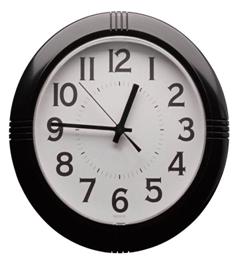
Claims sent to CSC after this time may not be processed until the following week's cycle.
CSC will continue processing claims received after 6:00 PM on Mondays, and will get as many as possible into the current cycle. There is no guarantee that any claims received after the Monday cut-off will make it into the current cycle. Those that do not make the cut-off will be included in the next weekly cycle.
CSC returns a 997 (Functional Acknowledgment) Response file for all electronic claim submissions. Submitters will know the cycle in which the claims are processed by interrogating the 997 Response. The file name includes a date and time stamp. Providers who use ePACES can verify if claims were accepted for processing by clicking on the "Submit Claim Batches" function on ePACES, then click on the "Previously Submitted Batches" hyperlink. If the Total Rejected shows a zero (0), it is an acknowledgement that the file was accepted. The second column "Submit Date" can be used to approximately determine when claims will be processed.
If the Response indicates the claims were accepted, the submitter can check the Cycle Calendar for the corresponding cycle information.
Questions? Please contact Computer Sciences Corporation at (800) 343-9000.
Electronic "Remittance News" Announcements Available
Return to Table of Contents
Changes impacting electronic remittance delivery or formatting are available via email from Computer Sciences Corporation (CSC).
If you are interested in receiving timely notices or reminders about upcoming changes or issues impacting your electronic remittances, you should register online with CSC to receive email notification.

Online registration is fast and easy. Simply visit:
http://www.emedny.org/HIPAA/index.html
From there, click on the link that reads:
"If interested in receiving emails from CSC regarding remittance news and updates, please click here."
Questions? Please contact Computer Sciences Corporation at (800) 343-9000.
Attention
Emergency Medicine
Physicians
Increase in Fees Effective April 1, 2006
Return to Table of Contents
A recent change to State legislation has increased fees for Emergency Medicine physicians (Specialty Code 250) to $25 effective April 1, 2006 for the Emergency Department service procedure codes (99281 - 99285).
Claims for dates of service on or after April 1, 2006 with an amount charged greater than $25 that were paid at the previous $17 fee will be reprocessed by Medicaid's payment system to provide the higher payment amount.
Questions? Please call the Bureau of Policy Development and Agency Relations at (518) 473-2160.
Announcing the Training Calendar for Free HIV/AIDS Training
Return to Table of Contents

In the August 2006 Medicaid Update, we provided the names and telephone numbers of several HIV/AIDS Training Centers within New York State that would soon offer free HIV/AIDS trainings for non-physician health and human service providers.
The New York State Department of Health AIDS Institute has announced the Fall/Winter 2006 training calendar!
For the training calendar and more information, please visit:
http://www.nyhealth.gov/diseases/aids/training/index.htm.
Questions? Please contact your local training center.
Attention:
Ambulette Providers
Claims Require Ordering Provider's
Medicaid Identification Number
Return to Table of Contents
Medicaid policy requires that all Ambulette Providers (Category of Service 0602) enter the ordering provider's Medicaid identification number, or license number and profession code, when submitting a claim to Computer Sciences Corporation.
Failure to accurately report the ordering provider's identification number will prevent the payment of claims.

Additionally, as reported in the November 2005 Medicaid Update, all claims (electronic and paper) submitted to the Medicaid Program by ambulette providers must contain the Driver's License Number and the Vehicle License Plate Number.
Claiming Instructions
Detailed, specific claiming instructions are located in the Non emergency Transportation Companion Guide, available online at:
http://www.emedny.org/hipaa/emedny_transactions/837P/837P_NON-EMERGENCY_TRANSPORTATION_CG.pdf
Questions? Please contact Computer Sciences Corporation at (800) 343-9000.
Attention:
Rate Based Providers
Dates Recorded as Paid
Return to Table of Contents
Institutional rate based providers are reimbursed for the date range as entered in the claim level of the HIPAA X12 837I transaction.

Payment Amount Determination
The payment amount is determined by using the dates of service entered on the line level, using the dates entered and the number of units entered.
The actual dates of service entered on the line level are not recorded as paid dates.
The only date(s) recorded in History as paid are those dates entered on the claim level.
Example
- The date range entered on the claim level is 10/1 through 10/31.
- The dates of service entered on the line level are 10/1/06 for 8 units, 10/10/06 for 8 units and 10/31/06 for 6 units.
- The total payment would be for 22 units of service and the date recorded as paid will be 10/1/06 through 10/31/06.
Note: For ePACES users, the date range at the claim level is entered in the "Institutional Screen,"
Admission Information Section. Questions? Please contact Computer Sciences Corporation at (800) 343-9000.
Attention:
Omni 3750 Point of Service Users
Omni 3750 Terminal May Not Function With Digital Telephone Service
Return to Table of Contents
If you are considering changing your telephone service and are currently using an Omni 3750 Point of Service (POS) terminal to verify client eligibility or to request service authorizations, you should be aware that the POS terminal may not function on a digital telephone line, such as an internet-based telephone service that uses Voice-over-IP.
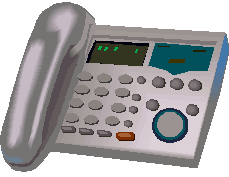
Provider Responsibility
Neither Computer Sciences Corporation (CSC) nor the Department of Health (DOH) can provide any assurance that a particular telephone service can support your Omni 3750 device at your location.
It is the provider's responsibility to verify that their new telephone service will support their POS terminal. You should check with the telephone service vendor prior to changing telephone services.
Providers who are required by DOH to use the Omni 3750 to swipe the client's card are responsible for verifying that the
Omni 3750 terminal will work on their phone service.
In some cases, the vendor may recommend a converter or suggest that you keep an analog telephone line available to continue to utilize the Omni 3750 POS terminal.
Again, this is a matter that must be resolved with your new telephone vendor.
Alternative Options for Verifying Eligibility
If you have access to the internet, you may wish to consider using the ePACES system, unless you are a provider required by DOH to use the OMNI 3750.
ePACES is a free web-based program that allows providers to perform the same functions as the Omni 3750 terminals, plus the following transactions:
- Claims;
- Eligibility Verifications;
- Utilization Threshold Service Authorizations;
- Claim Status Requests;
- Prior Approval Requests; and
- Post and Clear Transactions.
If you are interested in ordering a new Omni 3750 or enrolling in ePACES, please visit:
http://www.emedny.org/selfhelp/pos/faq.html or http://www.emedny.org/selfhelp/epaces/faq.html
Questions regarding the functioning of the Omni 3750 POS terminal with your new telephone service should be directed to your telephone service vendor.
Questions regarding Omni 3750 POS terminals or ePACES? Please call CSC at (800) 343-9000.
Safe Storage and Disposal of Household Sharps
Return to Table of Contents
According to the United States Environmental Protection Agency, 8 million people in the U.S. use more than 3 billion needles, syringes and lancets ("sharps") annually to manage medical conditions at home.
Safe disposal of sharps is critically important to ensure people are protected from potential needle stick injuries or exposure to blood borne pathogens.
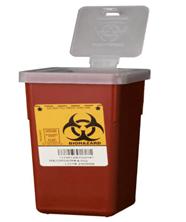
Safe disposal of used sharps protects children, pets and workers who handle trash and recyclables from illness and injury. Your assistance is needed to educate consumers about the best ways to store their used sharps and to provide options for safe disposal.
Storage of Used Sharps
Recipients should discard used sharps in a sharps container, which can be purchased at a local pharmacy. Plastic bottles that cannot be broken or punctured, such as bleach bottles or laundry detergent bottles, can also be used.
Recipients should close the screw-on cap tightly and write "Contains Sharps" on the bottle.
Sharps should not be stored in:
- soda cans,
- milk cartons,
- glass bottles; or
- other containers that can be broken or punctured.
Coffee cans are not safe because the plastic lids come off easily.
Recipients should be encouraged to keep the container closed and away from children and pets.
Containers should not be thrown into the trash or into recyclable containers.
In New York State, hospitals and nursing homes are mandated to accept home-generated sharps as a free community service through their sharps collection programs. The locations and schedules of these programs may be found in the New York State Directory of Community Sharps Collection Sites on the Department of Health's web site at:

In addition, other sites such as pharmacies and community-based organizations are listed. Consumers may also call the Growing Up Healthy Hotline at: 1-800-522-5006 to find out the schedule for sharps disposal in their area.
For more information about safe sharps disposal, or to register to accept home generated sharps for safe disposal, please call the New York State Department of Health at:
(212) 417-4770.
Your Provider Manual is Going Online!
Return to Table of Contents
Policy sections of the following manuals are available online at
http://www.emedny.org/ProviderManuals/index.html:
- Assisted Living Program
- Chiropractor
- Clinical Psychology
- Comprehensive Medicaid Case Management
- Dental
- Durable Medical Equipment
- Early Periodic Screening Diagnosis & Treatment for Child Health Plus A
- Hearing Aid
- Home & Community Based Services
- Laboratory
- Limited License Home Care
- Long Term Home Health Care
- Midwife
- Nurse Practitioner
- Personal Care
- Personal Emergency Response System
- Pharmacy
- Physician
- Private Duty Nursing
- School Supportive Health Services Program
- Transportation
- Traumatic Brain Injury Waiver
- Vision Care
Click on the above link to your manual and you will be brought to your Provider Manual website, where, in addition to policy information, you will find information including billing instructions and fee schedules.
The Provider Manual section of the website is updated frequently with information regarding billing policy and procedure codes/fee schedules. As a provider, it is your responsibility to check this website on a monthly basis to ensure you are current with the latest policy information.
Providers are also responsible for information included in the Information for All Providers Manual, including general Medicaid policy, general billing, inquiry and third party information.
If you do not have access to the internet, you must contact Computer Sciences Corporation to receive a hard copy of your Provider Manual at:
(800) 343-9000.
Fraud impacts all taxpayers.
Do you suspect that a recipient or a provider has engaged in fraudulent activities?
Please call:
1-877-87FRAUD
Your call will remain confidential.
The Medicaid Program encourages practitioners to copy and distribute the following information to their patients and to share it with their colleagues.

Every year in New York State, roughly 150 men and nearly 14,000 women are diagnosed with breast cancer while approximately 3,000 women die from the disease.
Breast cancer is one of the most common cancers to affect women in New York State.
Potential Risk Factors
Scientists have identified a series of potential factors that could put a person at risk for developing breast cancer:
- Genetics
A woman whose female relative developed breast cancer - especially at a young age - is more likely to develop a form of breast cancer. - Personal History of Breast Cancer
Men and women with a history of breast cancer in one or both breasts are at a higher risk to develop cancer in the remaining breast tissue. - Personal History of Benign Breast Tumors
Men and women with a history of certain types of non-cancerous breast tumors and cysts in their breasts are at a higher risk to develop a form of breast cancer.
Detection
Early detection - including regular mammograms, self-examination and examination by health care professionals - can help save your life!
Talk to your health care provider today about your breast cancer risk and screening options!
More Information
A Woman's Guide to Breast Cancer Diagnosis and Treatment is a booklet which identifies questions to ask your doctor, a glossary of terms and other breast cancer facts and is available online at:
http://www.health.ny.gov/publications/0401/.
Sources: http://www.health.ny.gov/statistics/cancer/registry/abouts/breast.htm
http://www.health.ny.gov/nysdoh/cancer/center/publication.htm
The Medicaid Program encourages practitioners to copy and distribute the following information to their patients and to share it with their colleagues.
Influenza
Are you at risk?
Return to Table of Contents

What is Influenza (flu)?
The flu is a contagious, respiratory infection caused by influenza viruses. It attacks the respiratory tract (nose, throat, lungs) and usually comes on suddenly.
How is the flu spread?
The flu can be passed to others through sneezing, coughing or touching surfaces that have been infected. Adults may be able to infect others beginning one day before getting symptoms and up to seven days after getting sick.
That means that you can give someone the flu before you know you're sick as well as when you are sick!
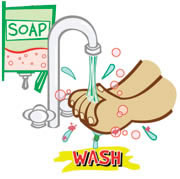
What can I do to protect myself and others?
You can take some simple steps to help prevent the spread of germs.
- •Get the flu vaccine.
- •Cover your sneeze or cough with a tissue, not your hands.
- •Wash your hands, prevent the spread of germs.
- •Give your immune system a boost by maintaining a healthy lifestyle, such as eating balanced meals, regular exercise & drinking plenty of fluids.
- •Avoid people who are sick.
If you start experiencing flu symptoms, call your health care provider. Certain medication can help if taken within the first 48 hours.
Who should get the flu shot?
Given the uncertainties in dose and distribution, prioritization has been implemented for those at highest risk for complications of influenza.
According to the CDC recommendations for 2006-07 flu season, the following priority groups should receive the flu vaccine:
Co morbid: The presence of one or more disorders (or diseases) in addition to a primary disease or disorder.
- Individuals six months old and older who have been displaced by Hurricane Katrina and are living
- in crowded group settings.
- Persons 65 years and older with or without co-morbid conditions.
- Residents of Long Term facilities.
- Persons 2 to 64 years with co-morbid conditions.
- Children aged 6-23 months of age.
- Pregnant women.
- Health-care personnel providing direct patient care.
- Caregivers and household contacts of children less than 6 months old.
The flu is a serious disease and can have serious complications. If you are uncertain as to whether you should receive the flu shot, check with your physician.
Who should not get the flu shot?
- People who have a severe allergy to chicken eggs.
- People who have had a severe reaction to an influenza vaccination in the past.
- People who developed Guillain-Barre syndrome (GBS) within six weeks of getting an influenza vaccine previously.
- Children less than six months of age.
- People who are sick with a fever. (These people can get vaccinated once their symptoms lessen.)
How do I know if I have the flu?

Symptoms of the flu usually come on quickly and the typical flu season is between the months of November-April. Some symptoms of flu are:
- fever (usually high);
- headache;
- extreme tiredness;
- dry cough;
- sore throat;
- runny or stuffy nose;
- muscle aches and
- gastrointestinal symptoms, such as nausea, vomiting and diarrhea, are much more common among children than adults.
How do you treat the flu?
- If you have seen a physician, follow their recommendations!
- Rest.
- Drink lots of fluids such as water, juice, tea and non-carbonated beverages.
- Over the counter medications can help treat the symptoms (check with your physician).
When should I call my doctor?
If you experience shortness of breath, chest discomfort, ear pain, high fever or you have a chronic condition, contact your health care professional immediately so that your medical practitioner can recommend what is the best treatment for you.
Education
Being aware of symptoms of the flu and taking some simple steps to prevent the spread of germs is essential. Prevention is the first step, vaccinate, educate others & teach others the importance of proper hygiene. Stay healthy!
Source adapted from:
New York State Department of Health, Influenza fact sheet;
Center for Disease Control and Prevention, Influenza (flu) protect yourself & your loved ones.
Sept 2, 2005;
U.S. Food and Drug Administration Beat the winter bugs, hold your own against colds and flu.
For more information on Influenza, you can visit the following websites:
New York State Department of Health at
http://www.health.ny.gov/nysdoh/flu/flu_fact_sheet.htm
Center for Disease Control and Prevention at http://www.cdc.gov/flu/keyfacts.htm
U.S. Food and Drug Administration at http://www.cdc.gov/flu/keyfacts.htm
The NYS Medicaid Program reimburses for medically necessary care, services, and supplies needed in the diagnosis and treatment of Influenza.

PROVIDER SERVICES
Return to Table of Contents
Missing Issues?
The Medicaid Update, now indexed by subject area, can be accessed online at the New York State Department of Health website:
http://www.nyhealth.gov/medicaid/program/update/main.htm
Hard copies can be obtained upon request by emailing: MedicaidUpdate@health.state.ny.us
Do You Suspect Fraud?
If you suspect that a recipient or a provider has engaged in fraudulent activities, please call the fraud hotline at: 1-877-87FRAUD. Your call will remain confidential.
As a Pharmacist, Where Can I Access the List of Medicaid Reimbursable Drugs?
The list of Medicaid reimbursable drugs is available at: http://www.eMedNY.org/info/formfile.html
Questions About an Article?
For your convenience each article contains a contact number for further information, questions or comments.
Do You Want Information On Patient Educational Tools and Medicaid's Disease Management Initiatives?
Contact Department staff at (518) 474-9219.
Questions About HIPAA?
Please contact CSC Provider Services at (800) 343-9000.
Patient Eligibility
Call the Touchtone Telephone Verification System (800) 997-1111, (800) 225-3040 or (800) 343-9000.
Address Change?
Questions should be directed to CSC at (800) 343-900, option 5.
Fee-for-service Provider Enrollment
A change of address form is available at:
http://www.emedny.org/info/ProviderEnrollment/Provider%20Maintenance%20Forms/6101-Address%20Change%20Form.pdf.
Rate-based/Institutional Provider Enrollment
A change of address form is available at:
http://www.emedny.org/info/ProviderEnrollment/Provider%20Maintenance%20Forms/6106-Rate%20Based%20Change%20of%20Address%20Form.pdf
Billing Question? Call Computer Sciences Corporation:
Provider Services (800) 343-9000.
Comments and Suggestions Regarding This Publication?
Please contact the editor, Timothy Perry-Coon at MedicaidUpdate@health.state.ny.us or via telephone at (518) 474-9219 with your concerns.
The Medicaid Update: Your Window Into The Medicaid Program
The State Department of Health welcomes your comments or suggestions regarding the Medicaid Update.
Please send suggestions to the editor, Timothy Perry-Coon:
NYS Department of Health
Office of Medicaid Management
Bureau of Program Guidance
99 Washington Ave., Suite 720
Albany, NY 12210
(e-mail MedicaidUpdate@health.state.ny.us)
The Medicaid Update, along with past issues of the Medicaid Update, can be accessed online at the New York State Department of Health web site:http://www.health_care/medicaid/program/update/main.htm
